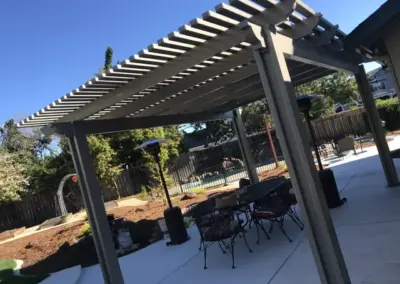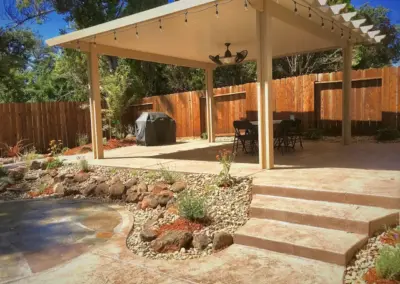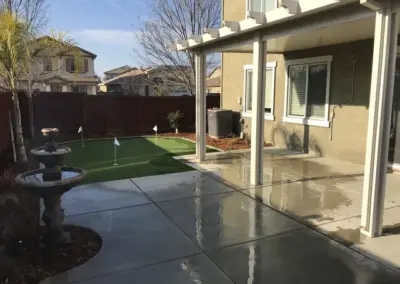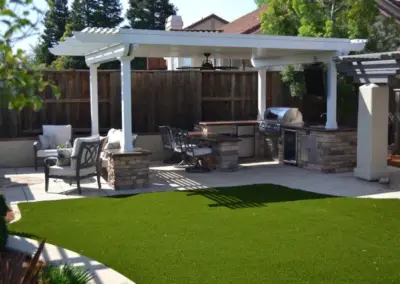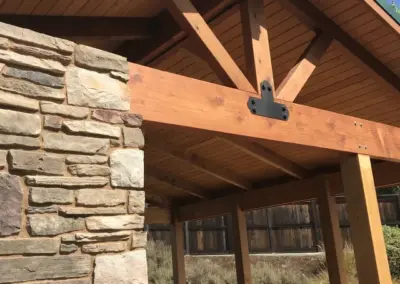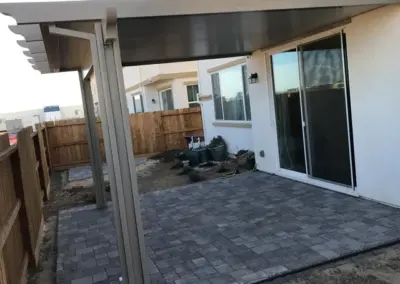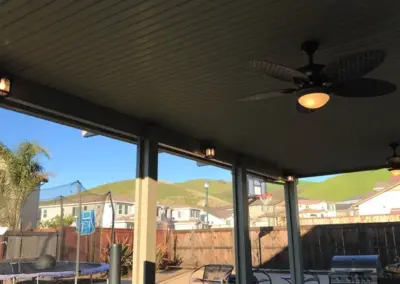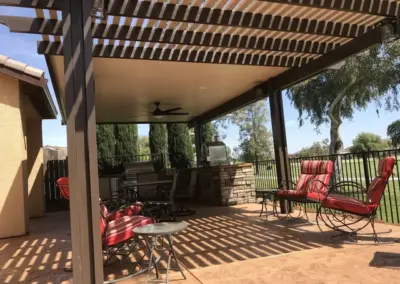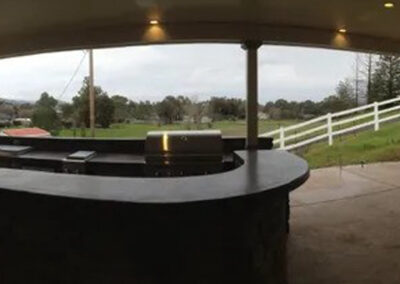Patio Covers
“Russ and Jill are wonderful; the kind of people you’d want as your neighbors. They were on time, on schedule, and very helpful (patient) designing and installing our new courtyard.”
Jim & Cindy L.
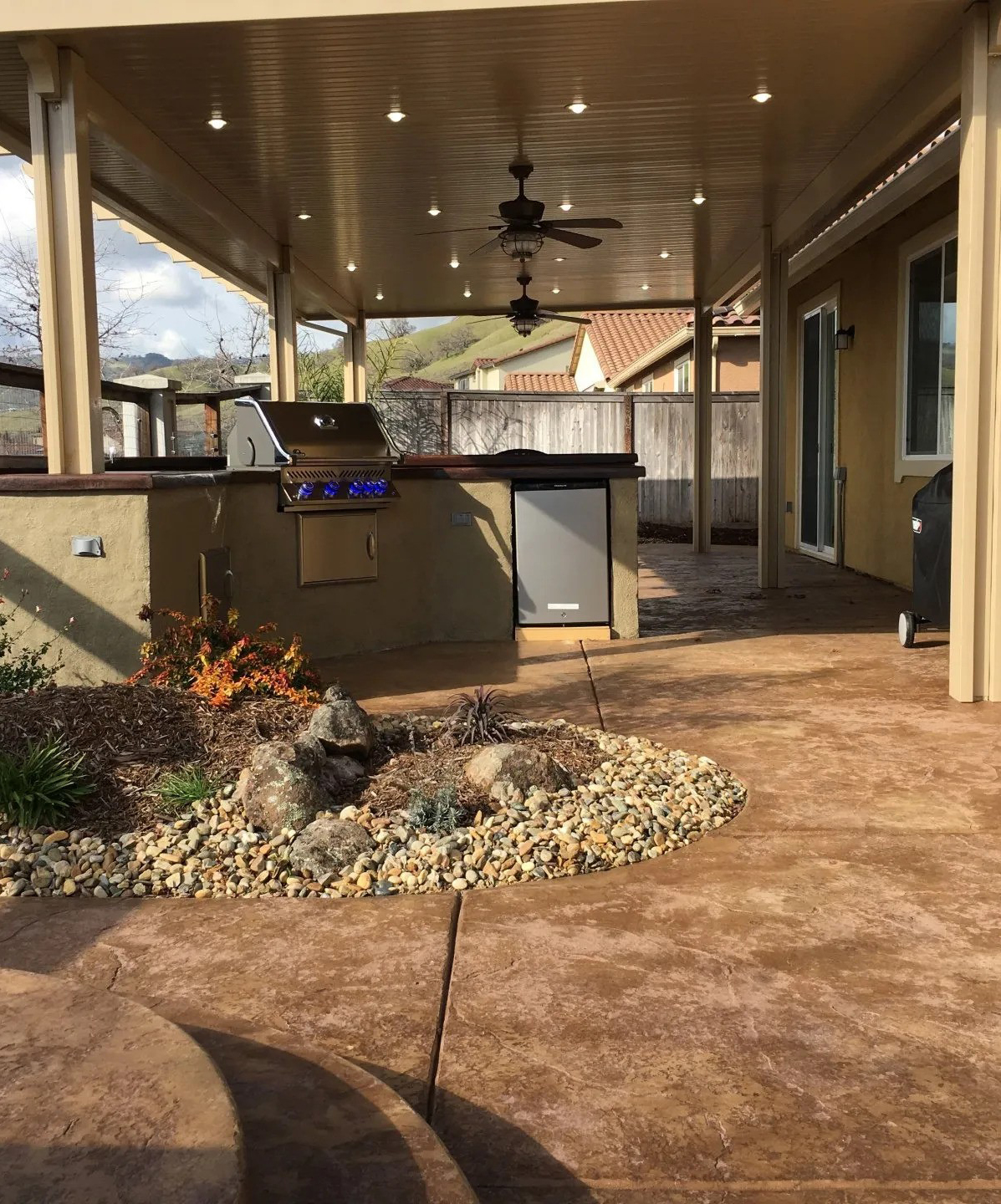
Plan Appropriately
A patio cover (arbor, pergola, “trellis topped thingy”…) refers to a structure that is typically located close to the residence and or in the principle seating area of the yard. They can be trellis topped (allowing filtered sun); solid topped (blocking sun and rain); or a combination of the two. There are many different types of materials they can be constructed out of (wood, steel, concrete, stone, and or any combination of them). We are really only limited by our imaginations, budget, and physics.
- Where will it provide the most protection from the elements?
- How many people will you be entertaining on average? (how big should it be?)
- What type of materials are best to construct it?
- If it ever gets damaged, is it easily repaired?
- How do the elements effect it?
- What kind of maintenance does it require?
How big should it be?
While question number one is important, number two is the more tricky of the bunch: To determine how large a cover you need, start with the fixed objects that will be under the cover (objects that don’t usually need to be moved). A 4’x6′ table = 24 square feet and a 3’x5′ barbecue = 15 square feet. Next, patio chairs typically measure 2.5’x2.5′ = 6.25 square feet. Multiply that 6.25 by 2 because chairs occupy two spaces, they slide in and out when people use them (12.5 square feet per chair). Lets say there are 6 chairs. 6×12.5 = 75 square feet. Add up all that square footage to get 114 square feet of space. Using your calculator, find the square root (it’s that button on the calculator that kinda looks like a check mark). You should get 10.677. Multiply this number by 20% to allow for walking space around the table and barbecue (1.2×10.677 = 12.813). Round 12.813 up to 13 feet. So, a bare minimum space you’ll need, inside post to inside post, is a patio cover that is 13 feet by 13 feet square. When it comes to concrete and patio covers, I tend to encourage my clients to error on the side of too much as opposed to too little. Happily, I’ve never gotten a call from a client whose regretted a larger patio area or cover.
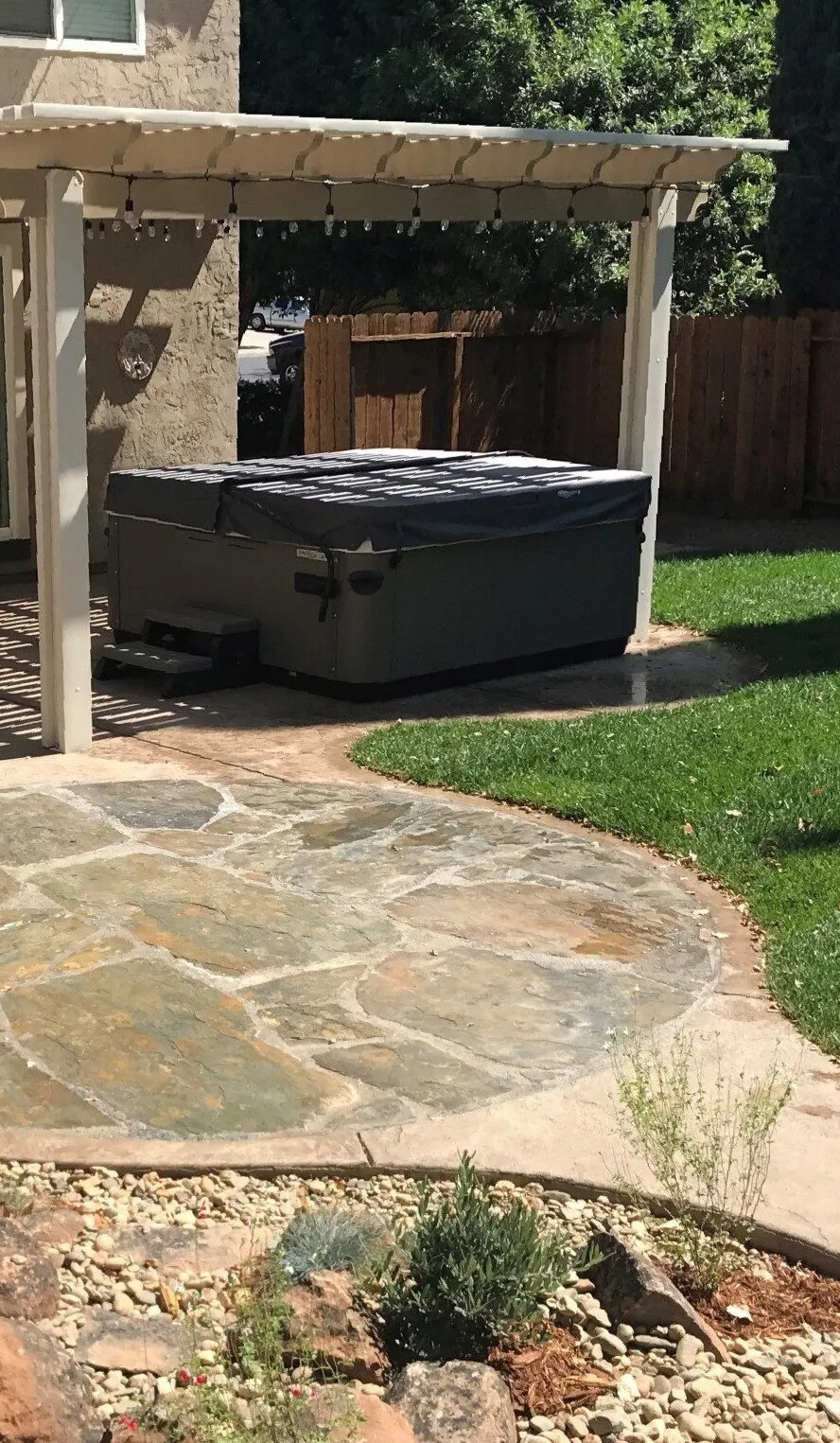
Different patio covers (arbors, pergolas, “trellis topped thingys”…) all perform similar functions. However, they are not all equal in how they serve their respective owners or properties. If you need assistance in the assessment process, we would be happy to help!

